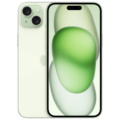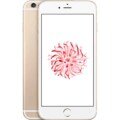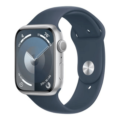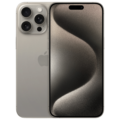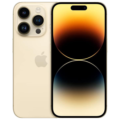- Home
- Apple Devices
- Apple iPhone
- Apple iPhone X Specs: 5.8” OLED, A11, 12MP Camera
Apple iPhone X Specs: 5.8” OLED, A11, 12MP Camera



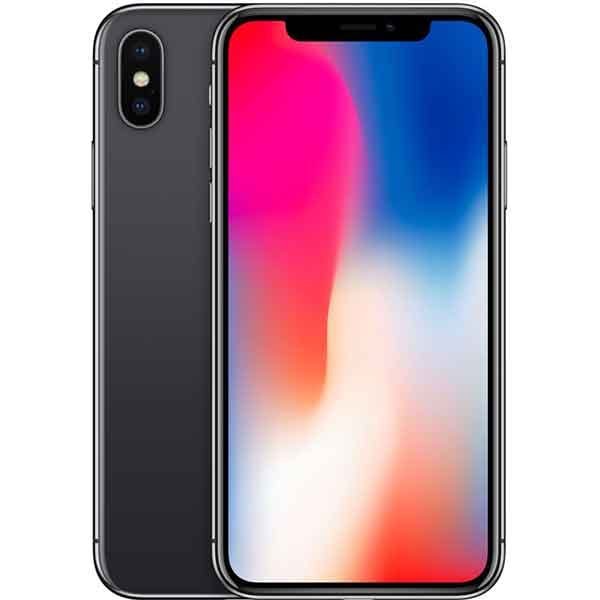
SPECIFICATIONS
General
| Status | Available |
| Announced | Released 2017, October |
| Released | 30 November, 2025 |
| Model | Also known as Apple iPhone 10 || A1865 (USA, Hong Kong, Australia, New Zealand, China) || A1901 (EMEA, UAE, LATAM, Canada, USA - AT&T/T-Mobile, Singapore) || A1902 (Japan), A1903 (Unknown market) |
| Price Apple iPhone Price in USA, UK, Canada, Australia, India, Pakistan, China, Japan and Europe |
USA - 64GB ($899.99) || 256GB ($1049.99) UK - 64GB (£999) || 256GB (£1,149) Pakistan - 64GB (Rs.149,999) || 256GB (Rs.174,999) India - 64GB (65,000) || 256GB (70,000) |
Network
| Technology | GSM / HSPA / LTE |
| 2G Network | GSM 850 / 900 / 1800 / 1900 |
| 3G Network | HSDPA 850 / 900 / 1700(AWS) / 1900 / 2100 |
| 4G Network | LTE band 1(2100), 2(1900), 3(1800), 4(1700/2100), 5(850), 7(2600), 8(900), 12(700), 13(700), 17(700), 18(800), 19(800), 20(800), 25(1900), 26(850), 28(700), 29(700), 30(2300), 34(2000), 38(2600), 39(1900), 40(2300), 41(2500), 66(1700/2100) |
| Speed | HSPA 42.2/5.76 Mbps, LTE-A (3CA) Cat12 600/150 Mbps, EV-DO Rev.A 3.1 Mbps |
| GPRS GPRS (General Packet Radio Service) is a packet oriented mobile data service on the 2G and 3G cellular communication system's global system for mobile communications (GSM), Generally, GPRS is used for the purpose of wireless data transfer, such as sharing pictures and videos or browsing the Internet via a mobile phone connection. | |
| EDGE EDGE (Enhanced Data GSM Environment) is a wireless network technology generally considered the next step in the 2G network offers data transfer rates up to four times faster than ordinary GSM networks, Generally, EDGE is used for the purpose of wireless data transfer, such as sharing pictures and videos or browsing the Internet via a mobile phone connection. |
Body
| Dimensions | 143.6 x 70.9 x 7.7 mm (5.65 x 2.79 x 0.30 in) |
| Weight | 174 g (6.14 oz) |
| Colors |
Space Gray, Silver |
| SIM SIM (Subscriber Identity Module) is a small card that contains mobile network subscriber's account information. This allows the phone using the card to attach to a mobile network. The SIM card is most commonly associated with GSM and UMTS mobile networks. Moving a SIM card from one phone to another allows a subscriber to switch mobile phones without having to contact their mobile network carrier. SIM cards can also be used by a phone to store limited amounts of data, such as phone numbers and text messages. | Nano-SIM |
Body
| Dimensions | 143.6 x 70.9 x 7.7 mm (5.65 x 2.79 x 0.30 in) |
| Weight | 174 g (6.14 oz) |
| Colors |
Space Gray, Silver |
| SIM SIM (Subscriber Identity Module) is a small card that contains mobile network subscriber's account information. This allows the phone using the card to attach to a mobile network. The SIM card is most commonly associated with GSM and UMTS mobile networks. Moving a SIM card from one phone to another allows a subscriber to switch mobile phones without having to contact their mobile network carrier. SIM cards can also be used by a phone to store limited amounts of data, such as phone numbers and text messages. | Nano-SIM |
Display
| Display Type Display Technology => A number of display technologies and types used in mobile phones => TFT (Thin Film Transistor), IPS (In-Place Switching), OLED (Organic Light Emitting Diode), AMOLED (Active-Matrix Organic Light-Emitting Diode), Super AMOLED (an even advanced version of AMOLED), Resistive Touchscreen (Resistive touchscreens contain two layer of conductive material with a very small gap between them which acts as a resistance), Capacitive Touchsceen (Capacitive touchscreen technology consists of a layer of glass coated with a transparent conductor) | Super Retina OLED capacitive touchscreen, 16M colors |
| Size | 5.8 inches, 84.4 cm2 (~82.9% screen-to-body ratio) |
| Display Colors Display Colors is refers to the number of different shades of colors that the screen is capable of displaying => 64K colors, 256K colors and 16 million colors, Obviously 16M is highest available range of colors and better than others. | 16M colors |
| Resolution | 1125 x 2436 pixels, 19.5:9 ratio |
| Pixel Density Pixel Density (PPI) is refers to the concentration of pixels on a particular display, measured in pixels per inch (ppi). Pixel density is calculated by dividing the diagonal pixel resolution of a display by its diagonal size, higher pixel density better display quality. | ~458 ppi density |
| Touch Screen | 3D Touch |
| Display Protection Display Protection => Gorilla Glass is a special alkali-aluminosilicate glass shield with exceptional damage resistance that helps protect mobile displays from scratches, drops, and bumps of everyday use, It is always better to go for a smartphone with Gorilla Glass for that added protection and peace of mind. | Scratch-resistant glass, oleophobic coating |
| Multitouch | |
| Features |
- Dolby Vision - HDR10 - Wide color gamut - 3D Touch - True-tone - 120 Hz touch-sensing |
Camera
| Primary Camera is able to capture photographs and usually videos, The most important characteristics of a camera are the resolution (measured in megapixels), lens focus type (fixed or automatic), higher megapixel cameras are known to capture higher quality photos, but not always a good measurement of the photos quality. |
Dual 12MP Wide and Telephoto cameras Camera-1: 12 MP, f/1.8, 28mm (wide), 1/3", 1.22µm, PDAF, OIS Camera-2: 12 MP, f/2.4, 52mm (telephoto), 1/3.4", 1.0µm, PDAF, OIS, 2x optical zoom |
| Video | TrueDepth camera with 1080p HD video recording at 30 fps |
| Camera Features |
- 1080p@30fps - 7MP photos - Retina Flash - Portrait mode - Portrait Lighting with five effects (Natural, Studio, Contour, Stage, Stage Mono) - Animoji and Memoji |
| Selfie Camera | 7 MP, f/2.2, 32mm (standard) |
| Video | TrueDepth camera with 1080p HD video recording at 30 fps |
| Camera Features |
- 1080p@30fps - 7MP photos - Retina Flash - Portrait mode - Portrait Lighting with five effects (Natural, Studio, Contour, Stage, Stage Mono) - Animoji and Memoji |
Software
| Operating System OS => Every computer system run on a base software called Operating System (OS). Operating System controls all basic operations of the computer (such as smartphone, PDAs, tablet computers and other handheld devices). The Operating System allows the user to install and run third party applications (apps), apps are used to add new functionality to the device. | iOS 11.1.1, upgradable to iOS 13 |
| Browser (Default) | Safari |
Hardware
| Chipset Chipset is a group of integrated circuits designed to perform one or a more dedicated functions, often with real time computing constraints, Popular smartphones are equipped with more advanced embedded chipsets that can do many different tasks depending on their programming. | Apple A11 Bionic (10 nm) |
| CPU CPU (Central Processing Unit) mostly known as processors, CPU processes instructions in order to carry out certain functions that make your device operate properly. Processors are often described as the brain of computers, smartphones and tablets, Smartphones and tablets rely on processors to carry out their every task, Processors are an incredibly important factor in selecting any type of computing device, including your smartphone. | Hexa-core 2.39 GHz (2x Monsoon + 4x Mistral) |
| GPU GPU (Graphics Processing Unit) is a single-chip processor designed to rapidly manipulate and alter memory to accelerate the creation of images in a frame buffer intended for output to a display, This includes things such as lighting effects, object transformations, and 3D motion. | Apple GPU (three-core graphics) |
| RAM (Memory) RAM (Random Access Memory) is a type of computer memory that can be accessed randomly, any byte of memory can be accessed without touching the preceding bytes that allows information to be stored and accessed quickly from random locations. RAM is the most common type of memory found in computer systems, smartphones, tablets and other electronic devices. | 3 GB |
| Internal Storage Internal Storage is a data storage space (flash memory) mostly used in smartphones, tablets and other electronic devices where operating system, apps, music, photos, videos, files and other user data Is stored. | 64/256GB |
| Card Slot Memory Card Slot is a special slot for inserting a memory card. Memory cards allow you to expand the phone's built-in memory, A memory card (sometimes called a flash memory card or a storage card) is a small storage medium used to store data such as text, pictures, audio, and video, for use on small, portable or remote computing devices such as mobile phones, mp3 players, digital cameras. | NO |
| Sensors Sensors are electronic components that detects and responds to some type of input from the physical environment. The specific input could be light, heat, motion, moisture, pressure and location, The output is generally a signal that is converted to use in computing systems, a location sensor, such as a GPS receiver is able to detect current location of your electronic device. |
- Face ID, accelerometer, gyro, proximity, compass, barometer - Siri natural language commands and dictation |
Battery
| Battery Type Battery Type => Cell phones run on various kinds of batteries depending on the manufacturer, phone size or shape and features. There are basically four types of cell phone batteries => Lithium Polymer, Lithium Ion, Nickel Metal Hydride and Nickel Cadmium. | Built-in rechargeable lithium‑ion battery |
| Capacity Battery Capacity is a measure (typically in Amp-hr) of the charge stored by the battery, and is determined by the mass of active material contained in the battery. The battery capacity represents the maximum amount of energy that can be extracted from the battery under certain conditions. | 2716 mAh |
| Placement | Non-removable |
| Wireless Charging Wireless Charging (Inductive Charging) uses an electromagnetic field to transfer energy between two objects. This is usually done with a charging station. Energy is sent through an inductive coupling to an electrical device, which can then use that energy to charge batteries or run the device. | Yes - Qi wireless charging |
| Fast Charging | Fast battery charging 15W: 50% in 30 min |
| Standby Standby Time is the total amount of time that you can leave your is fully charged, turned on and ready to send and receive calls or data transmissions before completely discharging the battery. | Up to 12 days |
| Talk Time Talk Time is the longest time that a single battery charge will last when you are constantly talking on the phone under perfect conditions, Ambient temperature and highly dependent on the cellular network environment such as the distance to the closest cell network tower. | Up to 21 hours (3G) |
| Audio Playback | Up to 60 hours |
| Video Playback | Up to 13 hours |
| Internet Usage | Up to 12 hours |
Media
| Alert Types | Vibration, proprietary ringtones |
| Loudspeaker | Yes, with stereo speakers |
| 3.5mm Jack | |
| FM Radio | NO |
| Features | Active noise cancellation with dedicated mic |
Connectivity
| Bluetooth Bluetooth is a wireless communications technology for exchanging data between mobile phones, headsets, computers and other network devices over short distances without wires, Bluetooth technology was primarily designed to support simple wireless networking of personal consumer devices. | 5.0, A2DP, LE |
| Infrared Infrared connectivity is an old wireless technology used to connect two electronic devices. It uses a beam of infrared light to transmit information and so requires direct line of sight and operates only at close range. | |
| Wi-fi Wi-Fi is a popular wireless networking technology using radio waves to provide high-speed network connections that allows devices to communicate without cords or cables, Wi-Fi is increasingly becoming the preferred mode of internet connectivity all over the world. | Wi-Fi 802.11 a/b/g/n/ac, dual-band, hotspot |
| Wi-fi Hotspot | |
| USB | 2.0, proprietary reversible connector |
| GPS GPS The Global Positioning System is a satellite-based radio navigation system, GPS permits users to determine their position, velocity and the time 24 hours a day, in all weather, anywhere in the world, In order to locate your position, your device or GPS receiver must have a clear view of the sky. | Yes, with A-GPS, GLONASS, GALILEO, QZSS |
| NFC NFC (Near field communication) is a set of standards for smartphones and similar devices to establish peer-to-peer radio communications with each other by touching them together or bringing them into proximity, usually no more than a few inches. |
MISC
Description
The Apple iPhone X, released in November 2017, marked Apple’s 10th anniversary milestone. With cutting-edge features like Face ID, a stunning Super Retina OLED display, and the powerful A11 Bionic chip, the iPhone X set a new standard for smartphones. Here’s an in-depth look at its specifications and features.
Table of Contents
Design and Build Quality

The Apple iPhone X is a masterpiece of design, combining a glass front and back with a stainless-steel frame. Its edge-to-edge screen eliminated the iconic Home button, introducing an immersive experience.
- Dimensions: 143.6 x 70.9 x 7.7 mm
- Weight: 174 grams
- Build: Corning-made glass on both sides, stainless steel frame
- Water and Dust Resistance: IP67 certified (1m for 30 minutes)
Display: Super Retina Perfection
Apple’s first use of OLED technology was the 5.8-inch Super Retina OLED display, which offers vibrant colors, deep blacks, and HDR support.
- Resolution: 1125 x 2436 pixels (~458 PPI)
- Aspect Ratio: 19.5:9
- Brightness: 625 nits (HBM)
- Features: HDR10, Dolby Vision, 3D Touch, and scratch-resistant glass
The display stretches almost edge-to-edge, with a notch housing the True Depth camera system for Face ID.
Performance: Powered by A11 Bionic

The iPhone X was equipped with the Apple A11 Bionic chip, a 10nm hexa-core processor that delivered exceptional performance and efficiency.
- CPU: 2 high-performance cores (Monsoon) and 4 efficiency cores (Mistral)
- GPU: Apple-designed three-core graphics engine
- RAM: 3GB NV Me storage for lightning-fast access
This combination enabled seamless multitasking, gaming, and AR applications. Benchmark tests showed stellar results:
- AnTuTu Score (v7): 233,100
- GeekBench Score (v4.4): 10,215
Camera System: Professional-Level Photography

Dual Rear Cameras
The iPhone X features a dual 12MP camera system designed for photography enthusiasts.
- Primary Wide Lens: 12MP, f/1.8 aperture, dual-pixel PDAF, and OIS
- Telephoto Lens: 12MP, f/2.4 aperture, 2x optical zoom, PDAF, and OIS
- Video Recording:
- 4K at 24/30/60 fps
- 1080p at 30/60/120/240 fps
Front Camera and Face ID
- Selfie Camera: 7MP, f/2.2 aperture, with HDR support
- True Depth Camera System: Enables Face ID for secure unlocking and 3D facial tracking for selfies.
- Video: 1080p at 30 fps
Battery and Charging: Long-Lasting Power

The 2716mAh non-removable battery supports both fast and wireless charging.
- Fast Charging: 50% charge in 30 minutes with a 15W charger
- Wireless Charging: Qi-compatible
- Talk Time: Up to 21 hours on 3G
Apple optimized the A11 Bionic chip to deliver exceptional battery efficiency, achieving an endurance rating of 74 hours in tests.
Software and Features
The Apple iPhone X launched with iOS 11.1.1 and is upgradable to iOS 16.7.7, ensuring longevity and compatibility with modern apps.
Key Features:
- Face ID for biometric security
- Apple Pay for contactless payments
- Augmented Reality (AR) support with ARKit
Connectivity and Audio
The Apple iPhone X offers a wide range of connectivity options:
- Wi-Fi: 802.11 a/b/g/n/ac, dual band
- Bluetooth: 5.0, A2DP, LE
- GPS: With GLONASS, GALILEO, and QZSS
- NFC: For Apple Pay
Built-in sensors include an accelerometer, gyroscope, barometer, proximity sensor, and compass.
Audio
- Speakers: Stereo speakers for clear and loud audio
- 5mm Jack: No (uses the Lightning port for audio)
Strengths and Weaknesses
| Strengths | Weaknesses |
| Stunning OLED display | Fragile glass design |
| Powerful A11 Bionic chipset | No expandable storage |
| Excellent camera performance | No headphone jack |
| Face ID is secure and convenient. | Average low-light photography |
| Regular software updates | Battery life could be better. |
Models and Pricing
Variants:
- A1865 (USA, Hong Kong, Australia, China)
- A1901 (EMEA, UAE, Canada, and more)
- A1902 (Japan)
Pricing (Approximate): - USA: $144.53
- Europe: €181.00
- India: ₹63,630
Why Choose the iPhone X in 2025?
Despite being a 2017 release, the Apple iPhone X offers exceptional build quality, a sharp display, and reliable performance. Its dual cameras, Face ID, and iOS upgrades make it a compelling choice for budget-conscious buyers seeking a premium Apple experience.

